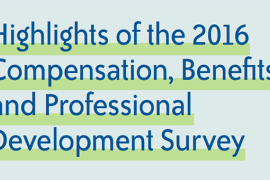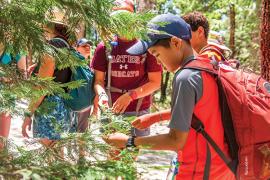Tony Hsieh's book, Delivering Happiness: A Path to Profits, Passion, and Purpose, struck a cord with millions of people. The best-selling book by the CEO of Zappos.com, Inc. about the company's success led to an entire movement whose mission is to "spread and inspire more happiness in the world." (2012)
But when I read the book I was unaware of the global movement. I was simply awed by how Hsieh so eloquently expressed what I've always believed to be true of camp. In order for Zappos to be successful, Hsieh believed the company needed to be more than just another online shoe company. Hsieh had a much loftier goal than sel l ing shoes — he wanted Zappos' primary purpose to be making employees and customers happier. Instead of delivering shoes, he wanted to deliver happiness.
Do you see the parallels with camp? On the surface, we may think we're delivering a two-week camp program or a teen leadership experience that has a tuition price tag. But if we really want to be super-successful camps, we need to conceive of ourselves as selling and delivering much more than just a camp session or a particular activity or program.
Zappos figured it out and we can too. Zappos is not just another online retailer. It develops relationships with its customers and instills a loyalty that is nearly unmatched in the competitive online retail market.
If you're ready to invest some time and effort to learn and apply these five lessons gleaned from Zappos, your camp will stand out among the many programs from which parents and youth have to choose.
1. Know your product.
What are you selling and delivering to your campers? If you make a list, you might include things like: a fresh start, a place to belong, new friendships, connecting with nature, and new healthy habits. But what do these all add up to for your camp? If your campers and staff are returning year after year to your program, then most likely you're delivering what Tony Hsieh and Zappos are — happiness! Now that we're clear about the product we're really delivering in our camps, let's figure out how we can deliver it better. Our counselors and staff need to know that they're not teaching kids to play tennis or weave macramé. They are developing relationships and creating communities that deliver happiness. The sooner our staff know what they're really delivering, the sooner all of our camps will be overflowing with so many campers that we'll need to expand or start new camps!
2. Articulate your core values.
You might know your personal values, but do they align with your staff and your customers' values, and are they incorporated into all aspects of your program? Do you know your camp's core values? Are they written down and shared with others? Take the time to figure out and write out your camp's top ten core values.
All Zappos staff and customers know Zappos' core values and make decisions based on those values. Not sure how to decide what your camp's core values are? Hsieh provides a blueprint of how to work with your staff and campers to develop your camp's core value list: 10 Steps for Developing Your Company's Core Values at www.deliveringhappiness.com/core-values/. Once you've established your core values, hire people who know, understand, and support those values, and then empower your staff to live out those values in their relationships and interactions with your campers.
3. Establish your camp's culture and create a "culture book."
Hsieh wrote, "At Zappos, our belief is that if you get the culture right, most of the other stuff — like great customer service, or building a great long-term brand, or passionate employees and customers — will happen naturally on its own. . . . Your culture is your brand."
When anyone in your camp community hears your camp's name, there are images and ideals that they associate with your program. If you ask your campers, camp parents, alumni, and staff what your camp means to them and how your camp has been important in their lives, do you get consistent answers? Are their views consistent with your camp's vision? If so, then you have an established camp culture and you need read no further in this section.
However, if your campers and staff don't have a consistent view of what your camp's culture is, or their view is not what you have envisioned for your program, then you need to invest time and money into creating your camp's strategic plan. This is not something you can do sitting by yourself at your desk. A comprehensive strategic plan will involve getting feedback from customers and including your key staff and customers in the process. And it will start with articulating your core values.
Zappos creates an annual "culture book" written by its staff and customers. How about creating your camp's culture book? Unlike a staff manual full of policies, rules, and official philosophy (that no one ever reads), a camp culture book compiles what your campers, parents, and staff actually think about your camp. Your culture book can be used as a tool to communicate to new staff, campers, and parents what your camp is all about. Does a whole culture book seem too lofty of a goal? How about just using your testimonials from the past few years and creating a page on your website that describes your camp's culture?
4. Wow your current customers.
"The number one driver of our growth at Zappos has been repeat customers and word of mouth," wrote Hsieh. "Our philosophy has been to take most of the money we would have spent on advertising and invest it into customer service and the customer experience instead, letting our customers do the marketing for us through word of mouth."
Brainstorm with your key staff crazy, outlandish, over-the-top ways that you could absolutely blow your current customers away with service. Figure out one thing you can do better this year that will exceed your campers' expectations while they're at camp and your camp families af ter they're back home. Rather than spending $5,000 to $10,000 on an advertising campaign, traveling to camp fairs, or purchasing more Google ad words, consider spending that money on a gift for your current campers or camp families that is aligned with your camp's core values. If budgetary constraints don't allow for that kind of expense, take the time to write a personalized note or send a printed photo to let each of your camp families know how much you value them being part of your camp community.
The loyalty you nurture in your current families will translate into a higher return rate. And the way they spread their love of camp to their friends will lead to many referrals.
5. Know and use your pipeline.
"We view the lifetime value of a customer to be a moving target that can increase if we can create more and more positive emotional associations with our brand through every interaction that a person has with us," Hsieh wrote.
At our camps, we have customers of every age and generation, and some of our customers aren't currently attending camp or sending their children to camp.
How are you keeping your valued customers in your camp's pipeline so they always think of your camp when the topic of summer camp comes up? Review how you're keeping up relationships with every member of your camp community. How many of your campers are returning to join your staff? Are alumni who are now parents sending their children to your camp?
The people who are part of your camp community are your most valuable assets. Stay connected with them, continue to nurture relationships, and let them know you appreciate them being part of your community, even (and maybe especially) during the years when they're not a camper, staff member, or parent. Each of your customers has the potential to be a customer for another generation or more, and the loyalty they have for your camp is priceless.
Let's all learn from Zappos and make our camps unforgettable places that inspire passionate loyalty from our campers, staff, and alumni!
Reference
Hsieh, T. (2012) Delivering happiness: A path to profits, passion, and purpose. Mundelein, Illinois: Round Table Comics.
Audrey "Sunshine" Monke is camp director at Gold Arrow Camp in California. She can be reached at [email protected].
Originally published in the 2014 November/December Camping Magazine.


